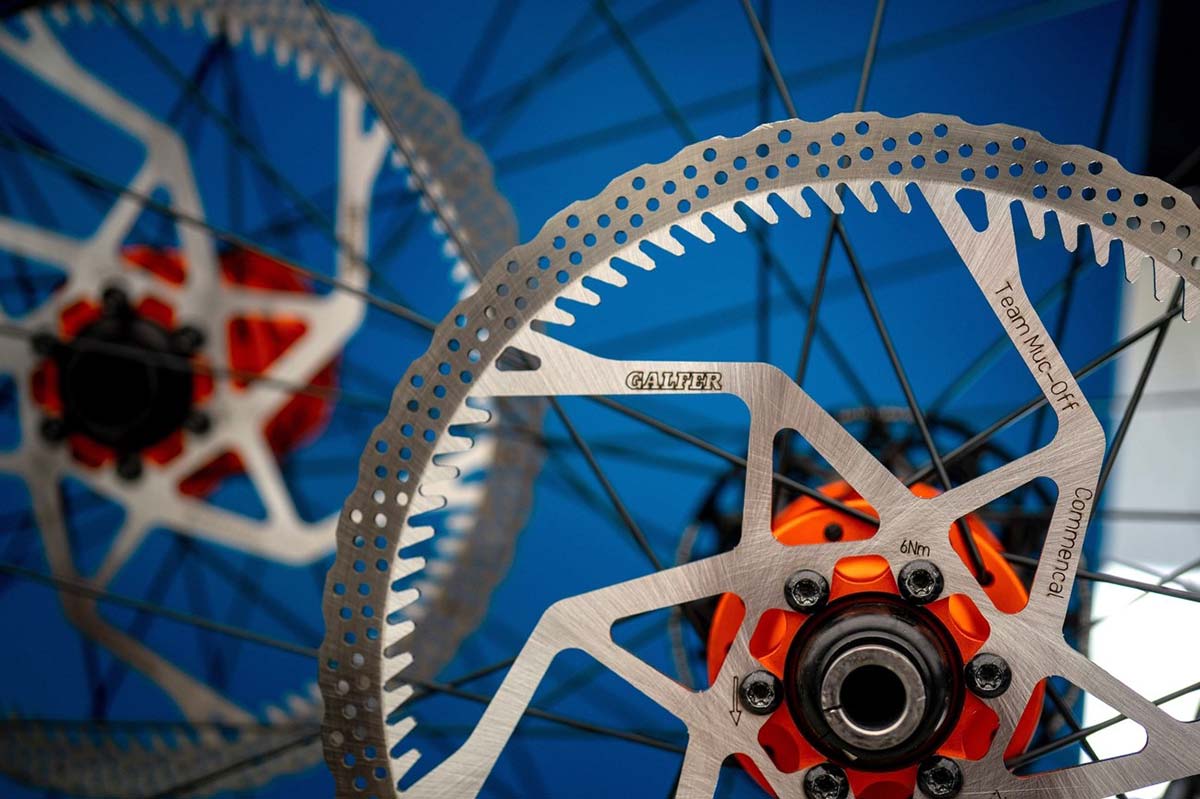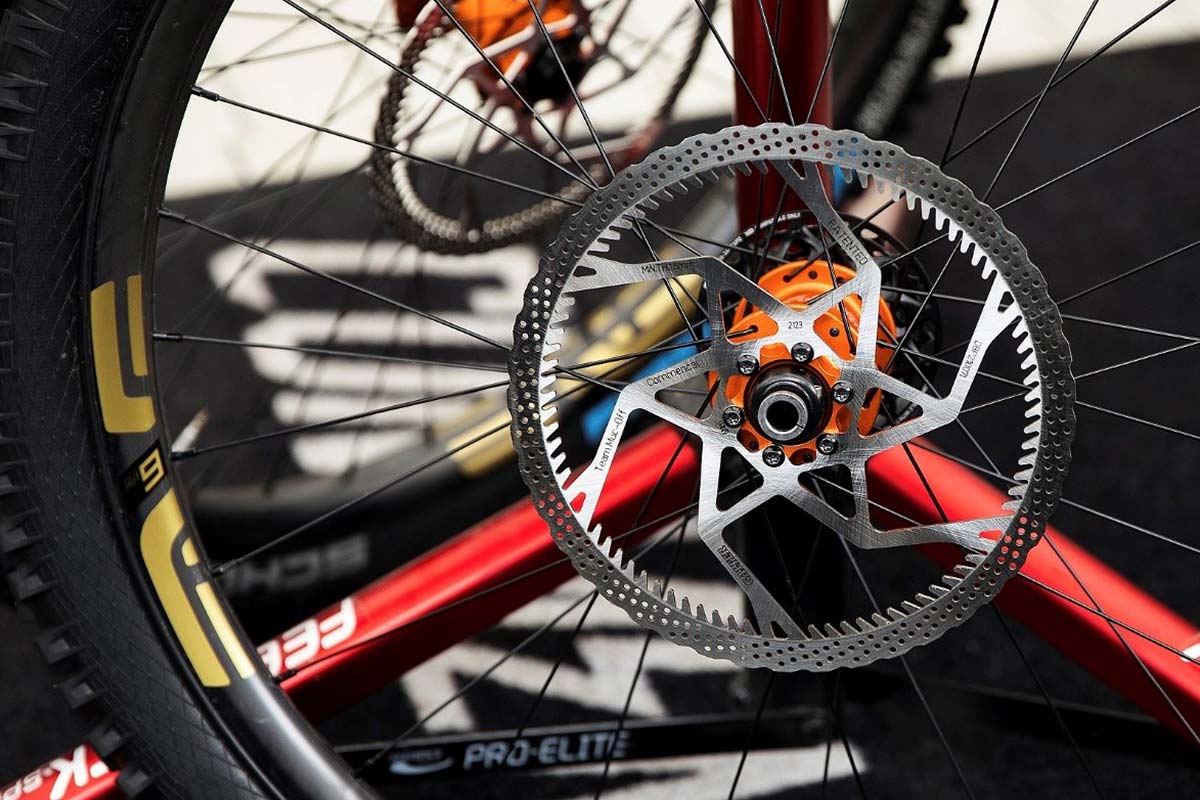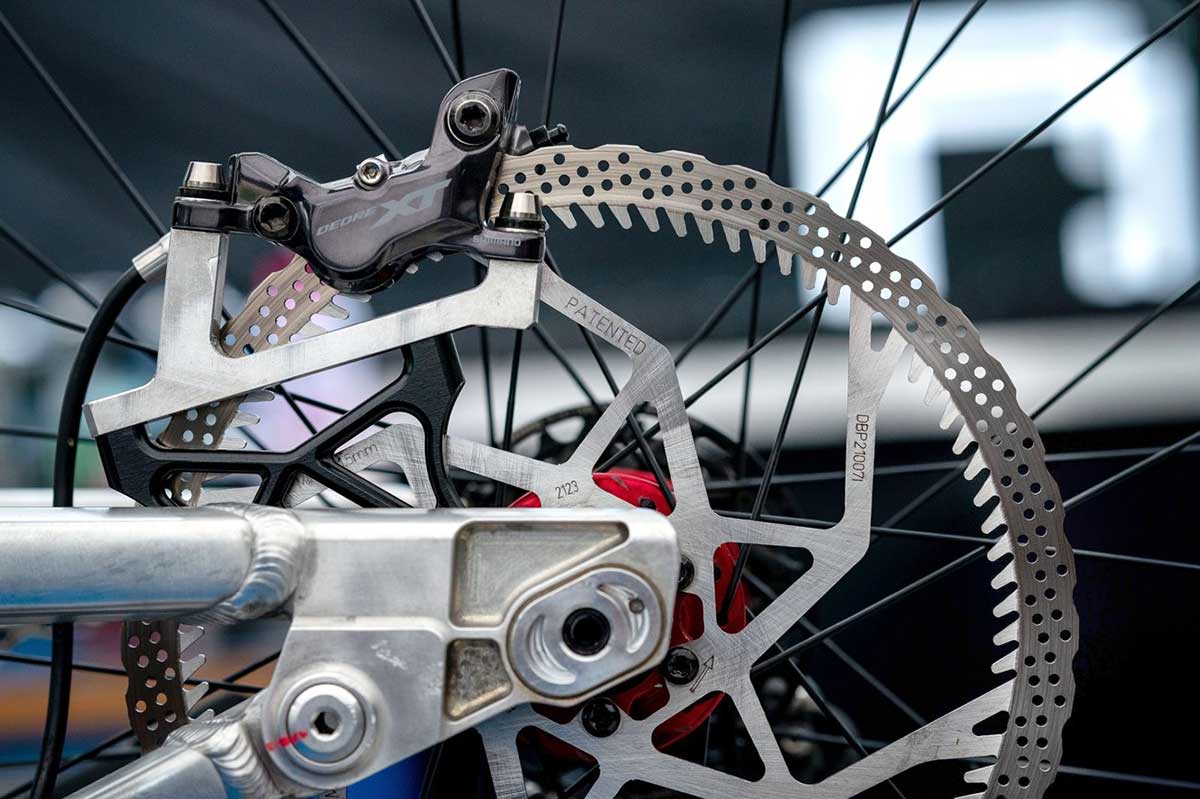Galfer have revealed details of new 223mm diameter prototype rotors for downhill racing. The 6-Bolt rotors, seen on the ENVE wheels of the Commencal MUC-OFF team at DH World Cup races, feature a unique finned architecture. The fins are said to act as a heat sink, allowing the braking surface of the rotor to cool more rapidly, reducing the effects of brake fade. We got some more details from Galfer’s engineer in charge, Ricard Bages.
Prototype Galfer Finned Brake Rotors

We recently asked Galfer to answer some of our readers’ questions on issues they were having with braking power. Galfer, along with TRP Cycling, Magura and Hayes, contributed with great enthusiasm to the Ask A Stupid Question feature. We even got a glimpse of some prototype disc rotors from the Spanish company.
Designer Ricard Bages tells us that the development of this finned disc rotor started when the Commencal MUC-OFF team asked them to produce a custom disc that would resist excessive temperature increases under braking on some of the steeper tracks of the World Cup circuit.
The top riders will regularly hit speeds of around 73 kph through the speed trap. When braking, they need to dissipate a large amount of energy in a short time; this produces a massive increase in temperature at the caliper, the most critical component of the braking system. If the disc is able to cooler faster, the hydraulic oil behind the pistons in the caliper will be kept cooler, too.

“We pushed the project as an R&D project to find new solutions for this specific requirement and after many virtual simulations we determined this geometry. It has many fins to increase the heat dissipating area by convection and small holes for the same purpose. The use of fins as a heat-sink is widely used by the industry. We have adapted that solution to a disc brake, considering the production process and the steel head conductivity” – Ricard Bages, Design Engineer at Galfer.
Galfer’s production discs don’t feature the aggressive-looking finned design. “A production disc must have a good compromise between many important specs: bite capacity, self-cleaning against mud, weight, and heat management. This prototype disk won’t go to production. It’s just a research tool to find new solutions” – Ricard Bages, Design Engineer at Galfer.

